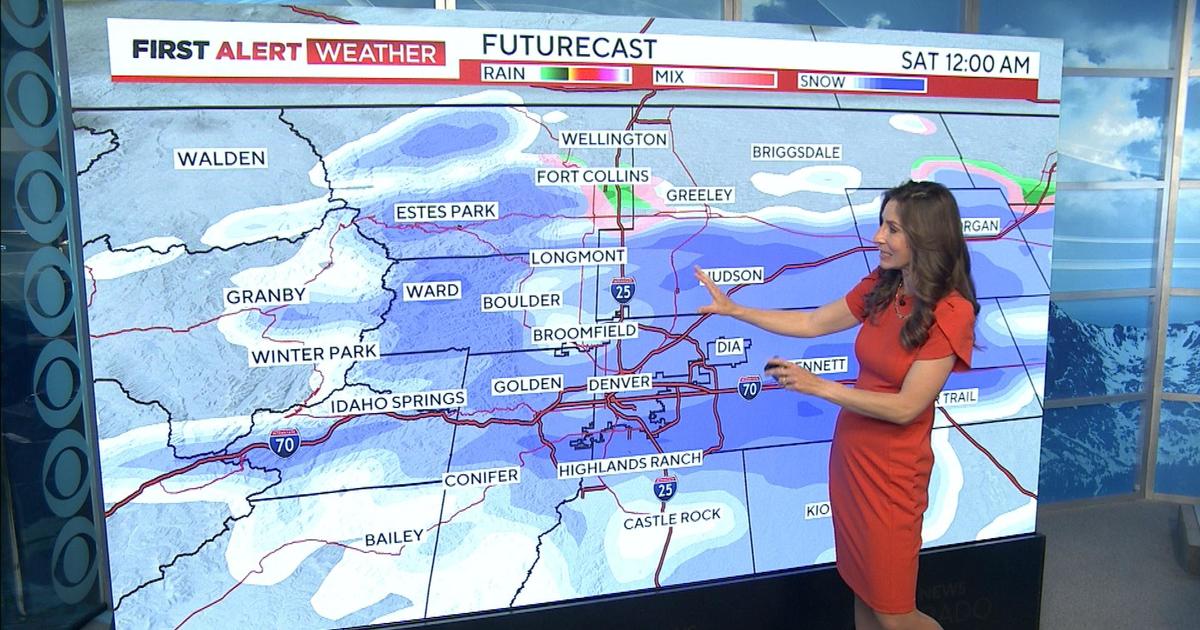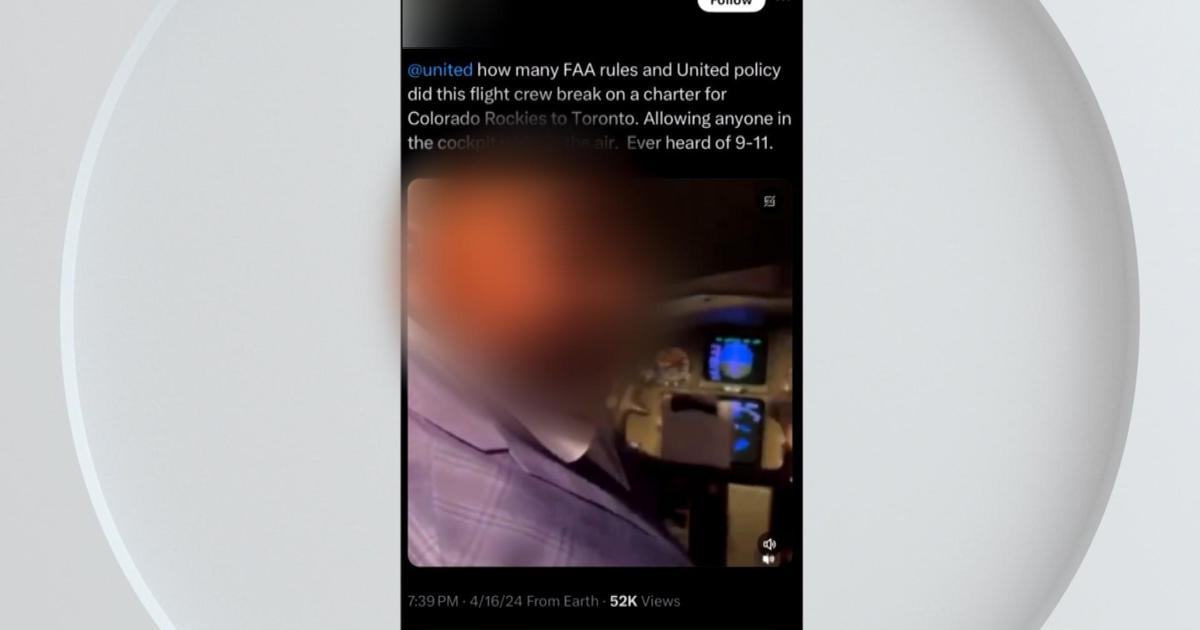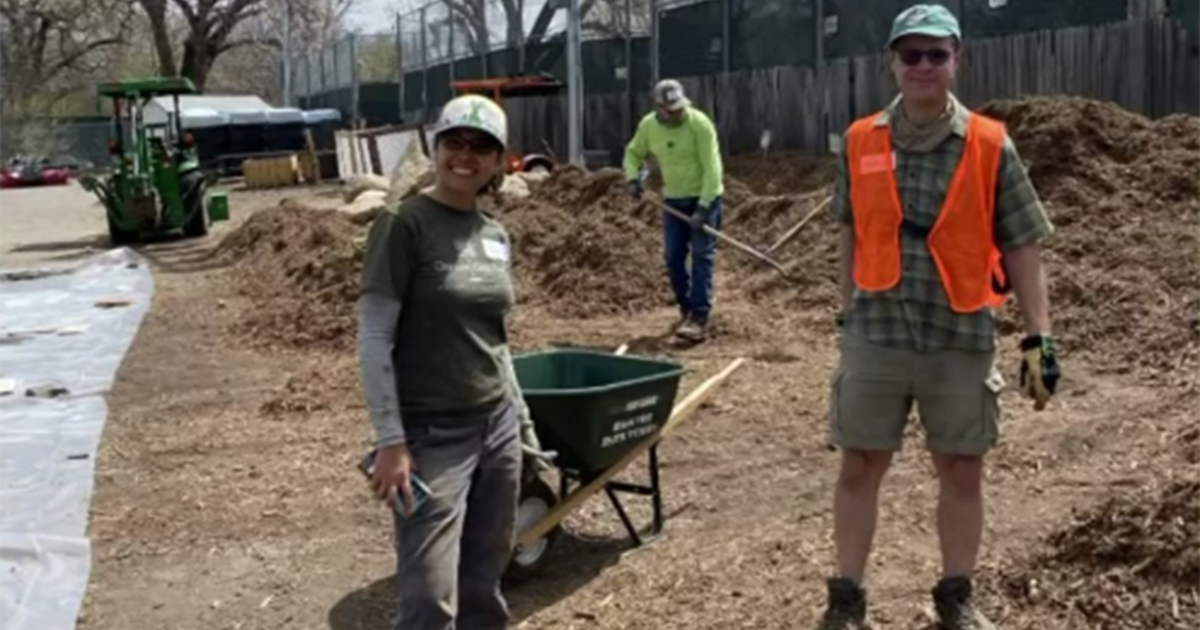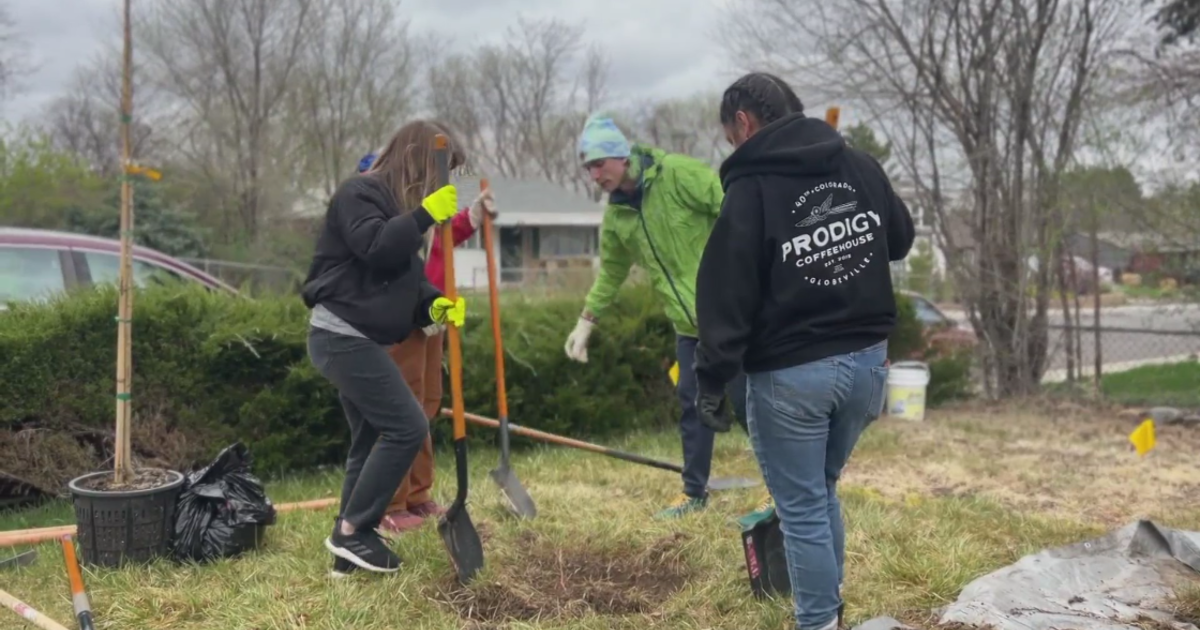Rocky Flats: Colorado's Nuclear Shadow
For 37 years, the Rocky Flats plant produced nuclear weapon parts, 16 miles northwest of Denver. In 1989, the FBI and EPA raided Rocky Flats uncovering serious environmental hazards. Rocky Flats was declared a Superfund site and a $7 billion cleanup would follow. Federal and state health officials say tests show the area where Rocky Flats once stood is safe. But, now as a new community is built alongside the former site, critics questioning the efficacy of the cleanup are coming forward.

Some people involved in the multi-billion dollar cleanup of Rocky Flats tell CBS4 it was not as effective as it should have been, and that dangers lurk beneath the soil.
Superfund cleanup of the former nuclear weapons production site was completed in 2005.
 (credit: CBS)
(credit: CBS)
Rocky Flats has had a long history as a critical role in America's Cold War nuclear efforts. The site was selected by the Atomic Energy Commission in 1952. It was shut down some 40 years later after environmental concerns and a change in presidential policy regarding production of nuclear weapons.
Rocky Flats was built to help protect America, but its nuclear product led to concern for its workers and neighbors. There were fires that sent radioactive plutonium for nuclear triggers into the environment. Corroding barrels of waste were buried in the perimeter buffer zone.
Protests were common, and in 1989 the FBI raided the plant. A massive Superfund cleanup took place until completion in 2005. It's now bordered by homes.
One man who took part in the cleanup as a manager wouldn't reveal his identity because he signed government papers forbidding him to speak. He said it was important for people new to the area to know the nuclear history of Rocky Flats.
 (credit: CBS)
(credit: CBS)
"Those people don't have a clue because they came from California and other places and don't know a darned about this," he said. He took CBS4 investigator Rick Sallinger on a "tour" of the former site using an aerial photograph. He pointed to one building in particular.
"It's been covered over with dirt. The floor of the building, the wall still remains in building 771. The wall is still there holding up the wall behind it," he said.
 (credit: CBS)
(credit: CBS)
The Department of Energy acknowledges that, but insists it is safely sealed in concrete. It points to multiple tests that show acceptable levels of radioactivity in and around the site. It notes that building is subsurface and covered deeply in dirt.
The problems with Rocky Flats reached a peak in June of 1989. The FBI, EPA and US Department of Justice raided the nuclear weapons production facility.
It resulted in criminal environmental law convictions. Jon Lipsky is the former FBI agent who led that raid on Rocky Flats.
"It's unfinished business to me and with the residential dwellings and the school in this area it's not a good idea," he told CBS4. Lipsky continues to function with others in a watchdog role over what's become of the former nuclear weapons site.
"When the government says it is safe for general use I think it would be better for everyone to know there is a calculated risk that you could be exposed to plutonium and when you are it's not a good end," Lipsky said.
CBS4 also spoke with another man who was also was deeply involved in the cleanup and asked that we not show his face. He says the plutonium radiation levels in testing were not reliable because he believes the best detection methods were not used.
 (credit: CBS)
(credit: CBS)
"It was like sending somebody out to take a picture of the sunset with a tape recorder," he said.
But the Department of Energy has indicated if it would detect possible contamination with one device the process didn't stop there. It would take samples into labs for further analysis.
Carl Spreng has overseen Rocky Flats for the Colorado Department of Public Health and Environment for 25 years. He stands by years of tests that have shown the area is safe.
"There's remedial contamination at Rocky Flats but it's at levels that are well below the acceptable levels for a healthy environment," Spreng said. When asked if he would be willing to live so close to Rocky Flats he replied, "Yes I would."
PHOTO GALLERY: Rocky Flats: Through The Years
No one denies deadly plutonium got into the air, the ground and the water, but despite the cleanup the debate continues.
A large portion of the site is scheduled to open to the public next year after being designated a National Wildlife Refuge.

Although Rocky Flats was dismantled and cleaned up more than a decade ago, the controversy surrounding the former nuclear weapons facility has not gone away.
From 1952 to 1989 radioactive plutonium was used at Rocky Flats to create triggers for hydrogen bombs.
 1952-1989: Rocky Flats workers produce plutonium triggers for hydrogen bombs. (credit: CBS)
1952-1989: Rocky Flats workers produce plutonium triggers for hydrogen bombs. (credit: CBS)
Now houses, a school and a whole community called Candelas, is under construction alongside the former Rocky Flats site, 16 miles northwest of Denver.

CBS4 sent a producer to Candelas with a hidden camera to see what prospective home buyers are being told.
One sales representative pulled out a map to help orient us, "This is Rocky Flats, they were doing some work with nuclear power."
CBS4: "Nuclear power?"
He said he was not allowed to "interject his opinion" about Rocky Flats, so he offered us a list of websites to read.
"So your first bit of homework is to check out these sites, this is all fact not fiction," he said.
The websites contained disclosures of what Rocky Flats was and test results that found development for residential or any other use was acceptable.
CBS4 obtained documents from another builder, which advised buyers to undertake their own independent investigation.
All Candelas buyers must sign papers acknowledging the area's history, current and future use.
CBS4 inquired further at another builder's model home.
 (credit: CBS)
(credit: CBS)
"The thought of that plant being there sometimes freaks people out," said another sales representative. "But we've got 600, 700 homeowners already, it is not an issue for them."
A third sales representative was more definitive when CBS4 asked, "Is the area safe?"
 Candelas (credit: CBS)
Candelas (credit: CBS)
"Of course it is. They'd never let us build if it wasn't."
The Department of Energy, EPA and Colorado Department of Health and Environment have all signed off on the area being safe for all uses.
"Extensive studies and investigation of the former Rocky Flats plant and site have shown that the risk is very low," said Lindsay Masters, an environmental protection specialist with the Colorado Department of Health and Environment.
She says she would have no problem sending kids to the new Jefferson County Three Creeks k-8 school which is slated to open at Candelas this fall.
 (credit: CBS)
(credit: CBS)
Among the skeptics, though, is Dr. Mark Johnson, the long time Executive Director of the Jefferson County Health Department, speaking for himself.
CBS4 asked Johnson if he would buy a house or send his children to school so close to Rocky Flats?
"I probably would not at this time, no," he said.
He would like an independent look at all the scientific data.
But, those who live here, like Eric Griffiths, have seen enough studies. CBS4 posed the same question to him.
 CBS4 Investigator Rick Sallinger interviews Eric Griffiths (credit: CBS)
CBS4 Investigator Rick Sallinger interviews Eric Griffiths (credit: CBS)
"I wouldn't be here if I didn't feel it was safe," Griffiths said. "In fact, I look forward to going into that preserve once it's open."
Looking out from his patio he doesn't see a former nuclear weapons facility.
He sees what he painted, a wildlife refuge one day filled with magnificent animals grazing where deadly nuclear weapons were once built.

The idea of living in Colorado's nuclear shadow made David Wood uneasy. The longtime Colorado resident remembered Rocky Flats when it was a nuclear weapons facility and the huge environmental effort to dismantle it.
"It gave me great pause," Wood said.
But, the history of Rocky Flats would not deter his dream of building a home nearby. Before he committed, he read all he could to educate himself about Rocky Flats. Government websites said the area was safe, but he found an equal number of detractors raising potential health concerns.
"To my horror, no clear message emerged," he said.
 (credit: CBS)
(credit: CBS)
So, the retired physics professor decided to launch a study of his own. He took three soil samples from the backyard of the lot he was considering purchasing and had them analyzed by the State Health Department.
"They came back consistent with no plutonium at all."
 (credit: CBS)
(credit: CBS)
Then Wood bought a Geiger counter and took his own radiation readings, near Rocky Flats and in other sites around the state.
"The rates that I measured were entirely consistent with background radiation from all over Colorado," he said.
Through his research, Wood was convinced building a home near Rocky Flats was safe.
"Namely, the cleanup had been successful and there were no hazards I could detect."
 David Wood (credit: CBS)
David Wood (credit: CBS)
Now, Wood is concerned about people raising fear about the safety of his new community.
"The public forums were completely disrupted by people with no quantitative point to make," he said, "flinging their arms around in anxiety and saying this could happen, that could happen."
Wood said the issue is pretty much settled.
"At the end of this process I concluded that what I read in federal reports and state reports was actually true," he said. "This isn't rocket science."

Officials with U.S. Fish and Wildlife Service plan to open the Rocky Flats Wildlife Refuge to visitors in 2018, but a large area in the middle of the site will remain off limits.
The plan is for both wildlife and people to roam where nuclear weapons were once built. But the center of Rocky Flats, which some call the "donut hole," will stay closed to visitors.
Officially, the "donut hole" is the Department of Energy's legacy site, where the most dangerous of the Rocky Flats plutonium production took place. That part will continue to be treated for residual contamination. Right now, the 'donut hole' is surrounded by a barbed wire fence to keep animals away.
 Sallinger interviews Lindsay Masters. (credit: CBS)
Sallinger interviews Lindsay Masters. (credit: CBS)
"The Central Operable Unit is not suitable for any use, because they are still treating it," said Lindsay Masters of the Colorado Department of Public Health and Environment. "They want to protect those systems."
Rocky Flats underwent a $7 billion multi-year cleanup from 2005 to 2012. The state, the EPA, Department of Energy along with the Fish and Wildlife Service have been insisting that the area around the center of the refuge is now safe.
"We would not open the Rocky Flats if we did not believe it was safe for our employees and our visitors," said David Lucas of U.S. Fish and Wildlife at a recent public forum. "We rely on the experts and that's who we brought here tonight, to really tell people the whole story about the former Rocky Flats and why it's safe."
 (credit: CBS)
(credit: CBS)
But not everyone seemed ready to take the government's word. Several environmental groups filed a federal lawsuit in an attempt to block public access to the refuge.
Bonnie Graham-Reed with the group Rocky Flats Right to Know is still leery.
"I would not take my granddaughter there," she said. "I would personally not take any children there."
The animals may one day roam here along with the public, but it may take a judge to decide in the end.

Barb Moore didn't have any signs during her pregnancy that her child wasn't going to be healthy.
"My son was born Dec. 20, 1975. He had a tumor around his aorta artery the size of a grapefruit. So there was no ignoring it, it was felt at birth," Moore said.
 Barb and Joe Moore (credit: CBS)
Barb and Joe Moore (credit: CBS)
Joe was immediately sent to Denver General Hospital for surgery and chemotherapy. He has been sick ever since.
"At two days old he had his first surgery to find out what it was at first and it was discovered it was a Neuroblastoma tumor," a very rare childhood cancer, Moore said.
In 1993, Moore and her son Joe were back in a doctor's office to find out he had pituitary tumor. He was diagnosed with Acromegaly/Gigantism.
 Joe Moore (credit: CBS)
Joe Moore (credit: CBS)
"In 2000, I stopped counting the number of diseases or disorders he had, but I counted 20 to 25 diseases before I stopped counting," Moore said.
Moore is one of a few dozen people who have now told their accounts of illnesses to researchers for the Rocky Flats Downwinders community health study.
Late last year, the study showed data from people who filled out an online survey. The data was hard to calculate, but showed higher cases of rare cancers by those respondents.
Rare cancers are generally referred to if less than seven people are diagnosed per 100,000 people.
That's the side of the health survey Dr. Stephanie Malin, a professor at Colorado State University in Fort Collins, is concentrating on.
"This is data that has not been gathered by the health department. You have people living down the street from each other or living in the same town that are both diagnosed with rare diseases when it's a surprise you would even find one, Let alone multiple cases," she said about the survey results. "It shows that the community concerns have not been addressed by the health studies that have been done by the state health department and that there are still many unanswered questions."
The Colorado Department of Public Health and Environment has been studying Rocky Flats for decades. An exposure study says plutonium did leave the Rocky Flats campus, but that plutonium does not pose an increased risk of cancer in the area.
Malin says the community health survey is approaching the topic of health concerns around Rocky Flats differently.
"Attention to environmental exposure is not given the same legitimacy as individual behaviors, and it tends to be a 'blame the victim' approach ultimately, not collectively what have we experienced with environmental contamination but what did you do wrong to end up with this disease," Malin said. "I think it's very important to capture people's stories, simply because so many people believe they haven't been listened to and their suffering has been ignored."
People like Barb Moore, or sisters Paula Elofson-Gardine and Susan Hurst who are also giving oral-histories to Malin and a team of academic researchers.
"A lot of our friends are dead now, the ones I went to school with out here," said Hurst. "Our dad died of cardio pulmonary, his lungs filled up with fibers. It went down as heart failure because his heart gave out."
 Susan Hurst (credit: CBS)
Susan Hurst (credit: CBS)
"But what he actually had was pulmonary fibrosis," said Elofson-Gardine.
Paula and Susan are healthy, right now, but have been advocating against Rocky Flats and the plutonium that left its property for years. They didn't realize the health impacts at the time but say plutonium is to cause for a variety of health issues.
Hurst, like Moore, had complications after her first pregnancy.
"She was born with parts of her brain missing, and the doctors from California called me and told me that, and asked me where I spent my first trimester and I said 'I was swimming in Leyden Lake, (a small lake southeast of Rocky Flats)," Hurst said. "I didn't know about Rocky Flats when my daughter died."
 Leyden Lake (credit: CBS)
Leyden Lake (credit: CBS)
Moore moved to the town of Leyden around the time she became pregnant with Joe. She believes plutonium coated the area as well.
"I had a wonderful neighbor, with an organic garden, and she grew all her own vegetables. Beautiful lady. (She) suffered 17 different kinds of cancer," Moore said. "17 cancers, she fed me through my pregnancy, I ate from her vegetable garden."
Malin says it's histories like these that are vital to find out more about the impacts Rocky Flats has had, and could still have as the population around the site grows.
"In a way I kind of see this as a second era of awareness and public transparency. You also have this era now in which people from out of state are moving in to this area in droves," Malin said. "I'm hoping the health study can help provide some information to people who have questions."
The Rocky Flats Health study is looking for money to continue researching. You can help here: www.youcaring.com/RockyFlatsHealthStudy

Like so many other stories, this one started with an email. It read, "I have been watching your investigative reporting for years now and I am writing to ask you if you are interested in reporting on the biggest story of your career, no joking, dead serious?"
Usually tips that start like fail to live to up to their billing. Nevertheless, the introduction got my attention.
The story, it turned out, had to deal with a subject that I had covered over a period spanning 37 years.
Correspondence revealed that this person had been in a managerial position involving the cleanup of Rocky Flats.
When I first came to Colorado in 1980 it was functioning as a production facility for the creation of what are called "pits," the triggers for nuclear weapons.
At that point in time it was already a controversial subject. Briefly, the use of plutonium had created dangers for the workers, the people who lived near the plant and for the environment. In 1989, a raid by federal authorities was tied to criminal charges for environmental crimes and the shutdown of the nuclear related facility. Adding to intrigue is the grand jury report that the government will still not allow to be released.
The site was designated as part of the EPA Superfund and a massive $7 billion cleanup took place. Fires over the years led to some of the contamination issues.
So clean was this area said to be that it was to be turned into a National Wildlife Refuge, open to the public with hiking trails on the land that is still off limits. It was deemed "acceptable for all uses."
 Sallinger interviews Dr. Mark Johnson. (credit: CBS)
Sallinger interviews Dr. Mark Johnson. (credit: CBS)
But our tipster insisted there were issues of which the public should be made aware. He was disturbed to see all the homes being built right across from the Rocky Flats perimeter and even more troubled to learn that a K-8 school was being built right there.
Using an official Department of Energy map, I was able to sit down with this former manager and he took me building by building through the issues he knew that left contaminated walls, stairs and other buildings partly left in place.
Government authorities confirmed much of the information, but insisted that it was left there because it was more dangerous for workers to remove than to seal it up with concrete and epoxy.
In addition there were barrels of waste buried in perimeter areas including stories of secret dumping in the middle of the night and more.
While I had driven past the old Rocky Flats fairly often on highway 93 to and from Boulder I had not turned off onto highway 72 going east. I was amazed at what I saw. A sign announces Candelas. Hundreds of homes are already there and more going up fast. This is right along what was the southern boundary of the former nuclear weapons production site.
Among the first I wanted to get in touch with was Jon Lipsky. He was the FBI agent who led the 1989 raid. He has since become a very vocal spokesman regarding the dangers associated with Rocky Flats.
We met at Candelas where he took me on a tour to see how close the homes were to where the buffer zone for Rocky Flats was located. While there I met a man who has a beautiful patio overlooking what is to become a National Wildlife Refuge.
I asked him if he was concerned about any possible dangers living so close. He replied that he was not and had faith in the government studies.
What happened next surprised me. He went inside his home and brought out a large painting he created showing the area adjacent to his subdivision. He showed numerous bison grazing and running through the land. As we noted in one of our stories, when he looks out from his backyard he does not imagine a former nuclear weapons plant, he sees a beautiful landscape filled with wildlife.
We wondered what prospective homebuyers were being told. We sent a CBS4 producer into several of the model homes with a hidden camera to see. The subject of being so close to Rocky Flats was not one the builders' representatives brought up until we inquired. Once we did the responses varied with some offering information on test results and other background.
All Candelas buyers must sign papers acknowledging the history, present and future use of the area. Candelas, we learned, was primarily funded by the Southern Ute Tribe. Its person designated to deal with our questions was very helpful with information, but would not provide anyone to go on camera for an interview.
Well, that first tip led to others like him. Some were willing to speak only anonymously others on camera. Eventually it was decided this is much too much for a one-part story, it needed more. And so, here we are "Rocky Flats, Colorado's Nuclear Shadow."



